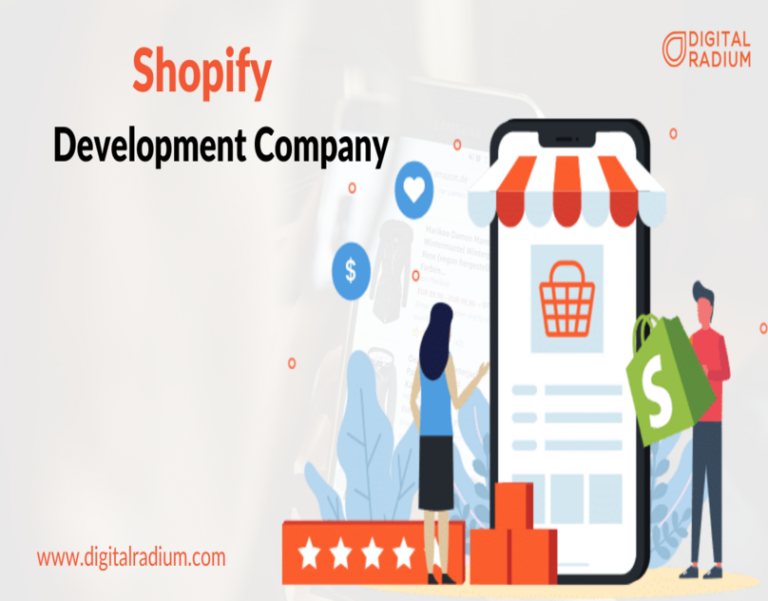A website that loads quickly and performs seamlessly is essential for a businesses success. This is particularly critical for e-commerce platforms like Shopify, where even a few seconds of delay in page loading time could lead to a considerable drop in user engagement, conversion rates, and ultimately, revenue. Therefore, optimizing the speed and performance of your Shopify website goes beyond just enhancing user convenience; it’s a strategic necessity that can significantly impact your bottom line.
Additionally, Site performance affects all your digital marketing strategies. Whether it’s paid, email, online reputation management, or social marketing, your website speed will impact users from all these different channels. If your site is receiving a fair amount of traffic from these channels, even a small performance improvement can result in noticeable revenue improvements. That’s why you should partner with Shopify Website Development Company, they can help you implement the essential strategies to optimize the speed of your shopify website.
Here’s How A Shopify Web Development Company Can Optimize Your Shopify Store
- Go For A Lightweight Shopify Theme:
Selecting a fast Shopify theme can significantly enhance the performance of your website. Some themes may come with unnecessary features that can slow down your site, while a lightweight theme can ensure that your website performs well. We have tested over 200 templates available in the Shopify Theme store and measured their benchmark First Contentful Paint (FCP) and Time To Interactive (TTI) using Google PageSpeed Insights.A Shopify web development company can provide you with a list of themes that perform better than others.
- Image Optimization:
Images are essential to the visual appeal of your Shopify store, but they can also slow down your website. To balance between visual quality and performance, optimize your images by using techniques such as compression to reduce the file size without compromising the quality. You can also choose the right image format (JPEG, PNG, SVG) based on the type of image and its intended use on your website. Additionally, you can implement lazy loading to prioritize the display of images that are currently visible to the user, deferring the loading of off-screen images.
- Avoid Third Party Plugins And Shopify Apps:
Shopify offers “Apps” that allow website owners to add functionality to their sites without needing a developer background. These Apps are a great way to enhance your site’s capabilities, as are any additional third-party scripts. However, it’s important to remember that these additions can negatively impact your site’s performance. Each time an App or script is added to your site, it increases the total number of requests your site is making.
Additionally, the size of these scripts should be taken into consideration. Too many Apps or third-party codes can decrease the performance of your Shopify store. Therefore, it’s essential to regularly review all of the tracking codes, Shopify Apps, and any other third-party resources you’re using to ensure they don’t harm your site’s performance.
- Implement Browser Caching:
If you want to improve the performance of your website for returning visitors and reduce the load on your server, leveraging browser caching is a great way to achieve this. Essentially, browser caching involves instructing the browser to store certain website resources such as images and CSS files locally on the user’s device.
This way, when the user revisits your site, they won’t need to download the same resources again, which can significantly improve the page load times. If you’re using Shopify, you don’t need to worry about implementing caching mechanisms as they are already built-in. However, if you want to further optimize caching settings, you can use third-party apps or custom configurations.
- Use Google Tag Manager
Google Tag Manager is a tool that simplifies the process of adding and removing tags from your website without any need to modify the code. With this solution, you can easily manage all of your website’s tracking code in one place. Additionally, Google Tag Manager loads all the code asynchronously, which means that the code loaded through it will not delay the rendering of your site’s content. As a result, you may want to consider a “tag migration” to move some of your tracking code to Google Tag Manager.
- Mobile Optimization
Mobile devices are the most commonly used devices by people nowadays. Therefore, it is crucial to optimize your Shopify website for mobile devices. To achieve this, make sure that your website design is responsive and mobile-friendly, and that it loads quickly on all devices and screen sizes. You should also prioritize techniques that enhance mobile performance, such as image compression, lazy loading, and minimizing render-blocking resources. By doing so, you can provide a seamless browsing experience to your mobile users and improve their overall satisfaction.
Conclusion:
To ensure a seamless user experience, it is vital to have a fast-loading Shopify website. By employing the six essential techniques, you can optimize your Shopify website’s speed. However, if you are not familiar with the Shopify platform or don’t have the technical expertise, it can be challenging to implement these techniques on your own. In such a scenario, you can rely on the expertise of a Shopify Web Development Company to help you optimize the speed of your Shopify store. With their vast experience and knowledge of the platform, they can ensure that your Shopify site loads quickly, improving user engagement and boosting conversions.

